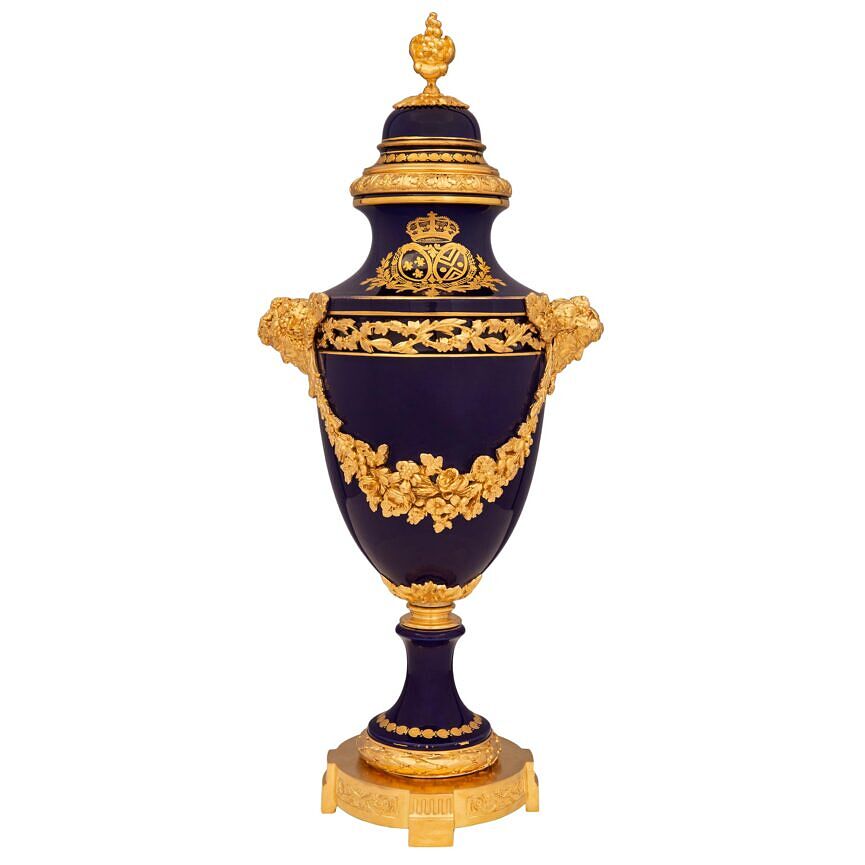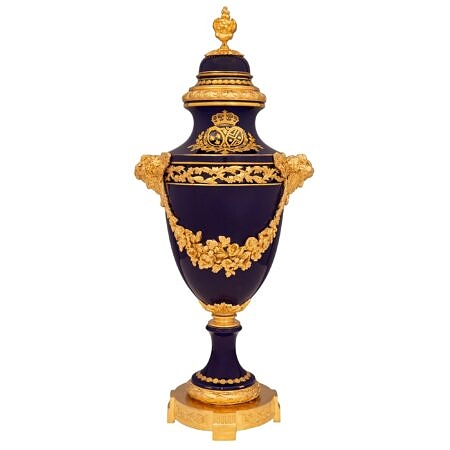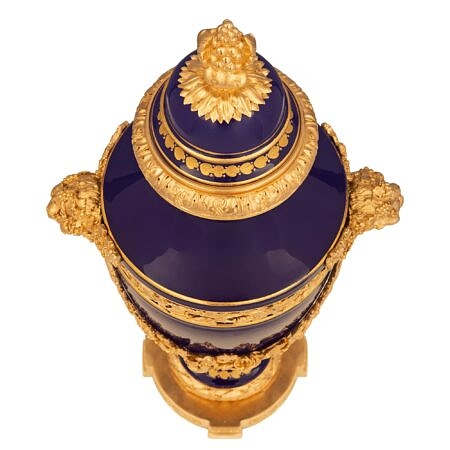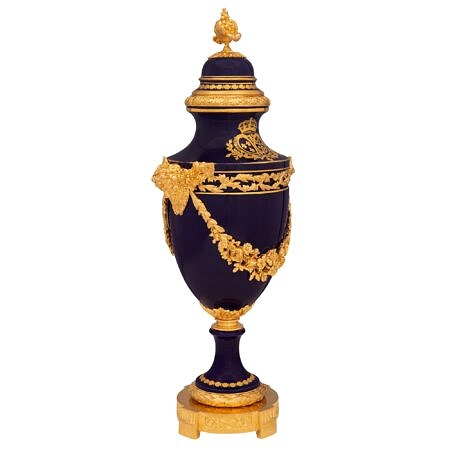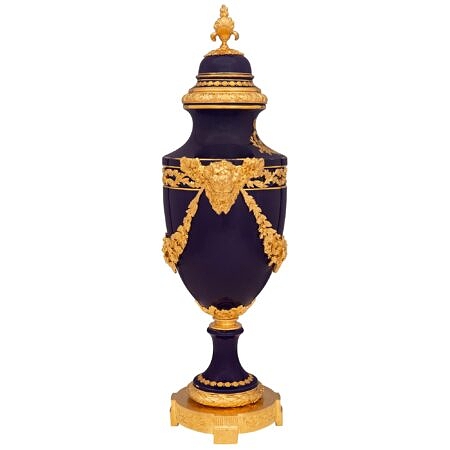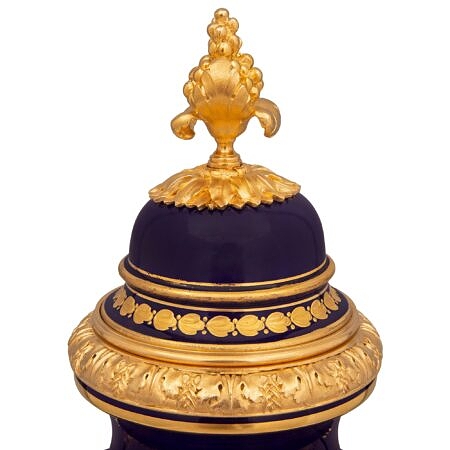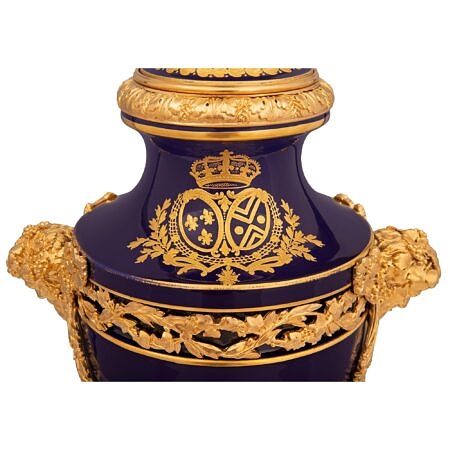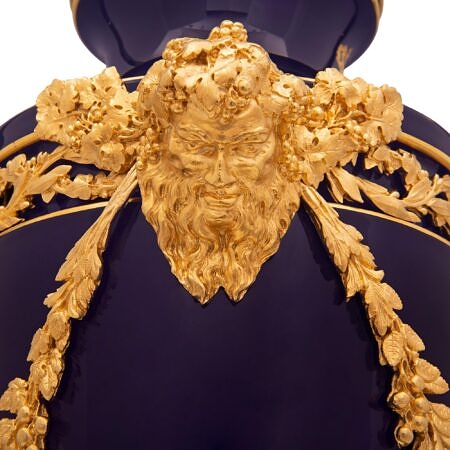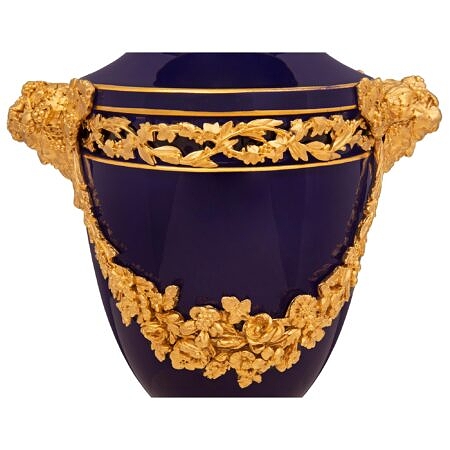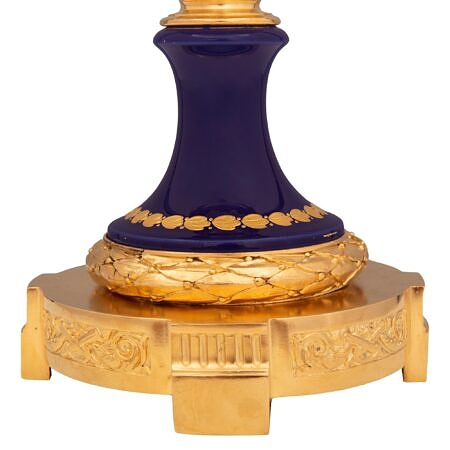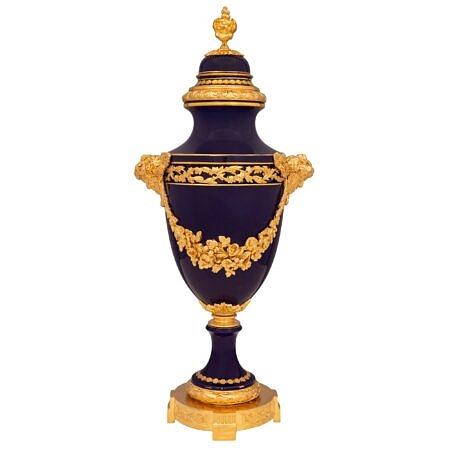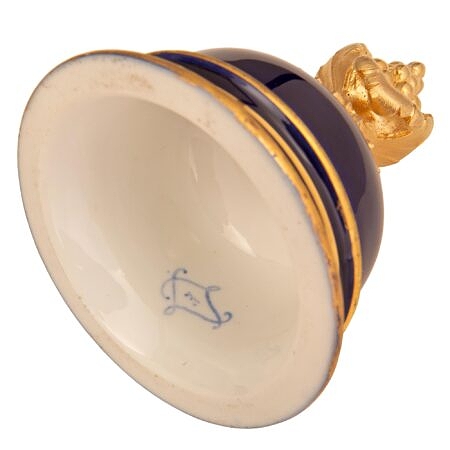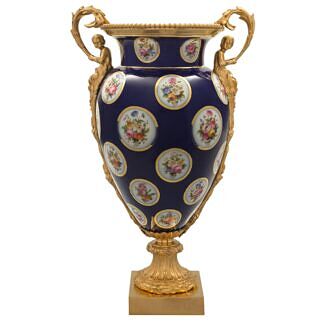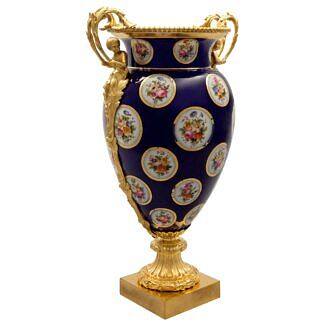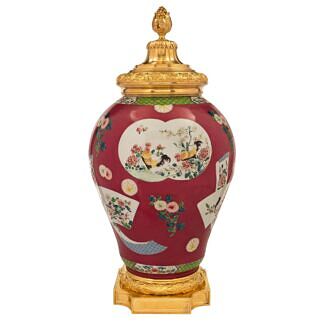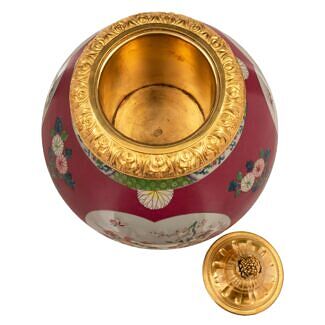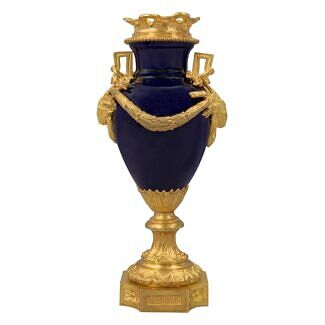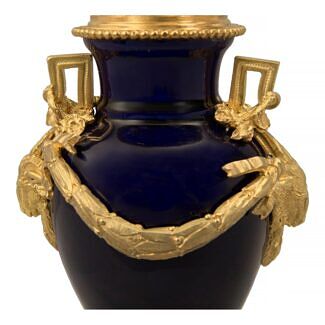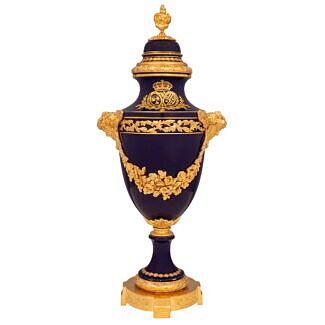A French 19th century Louis XVI st. Belle Époque period cobalt blue Sèvres porcelain and ormolu lidded urn signed Sèvres.
List: $13,900.00
A stunning and very high quality French 19th century Louis XVI st. Belle Époque period cobalt blue Sèvres porcelain and ormolu lidded urn signed Sèvres. The urn is raised by a circular ormolu base with fine block and fluted feet.... — Read More
A stunning and very high quality French 19th century Louis XVI st. Belle Époque period cobalt blue Sèvres porcelain and ormolu lidded urn signed Sèvres. The urn is raised by a circular ormolu base with fine block and fluted feet. The elegant socle shaped pedestal support displays a richly chased wrap around berried laurel ormolu band and lovely hand painted floral gilt accents. The beautiful cobalt blue porcelain body displays intricately detailed handsome bacchanalian bearded men with grapes and leaves in their hair connected by stunning blooming flower swaging garlands and an interlocking berried laurel branch. The curved neck displays an exceptional majestic gilt crest with a royal crown above the coat of arms from the House of Bourbon and lovely berried laurel garlands. The top rim displays a beautiful wrap around foliate band while the removable lid displays a charming gilt floral band and impressive finely detailed berried foliate finial in a rich satin and burnished finish. — Read Less
- Item # 11998
-
H: 20.5 in L: 8.25 in D: 6.25 in
H: 52 cm L: 21 cm D: 16 cm
- France
- 19th Century
- Ormolu, Porcelain
- Louis XVI st. Read More
- Sèvres Read More
It was founded through the support of King Louis XV of France and at the initiative of Madame Pompadour to be located near her Château.
Due to Sèvres’ reputation for excellence and prestige, it has always attracted some of the best artists throughout history; François Boucher, Albert-Ernest Carrier-Belleuse, Étienne Maurice Falconet, Alexandre Fragonard and August Rodin, just to name a few. Many of these artworks can be seen at the Louvre Museum and the Musée National de Céramique in France.
Initially, Sèvres created a soft paste porcelain know as Biscuit de Sèvres. In 1768 the Bordeaux chemist Villaris and Jean Baptiste Darnet discovered deposits of Kaolin on French soil. In 1771 the Royal Academy sent a report on the creation of hard paste porcelain at which time Sèvres began manufacturing hard paste porcelain.
Louis-Simon Boizot (1743–1809) was a French sculptor renowned for creating Biscuit de Sèvres models, and was the director at Sèvres from 1774-1800, followed by Alexandre Brogniart(1800-1847) and Henri Victor Regnault in 1854.
Related products
-
# 9194 - H: 16" L: 10" D: 7"
-
# 10325 - H: 28" D: 13"
-
# 8810 - H: 8" D: 3"


